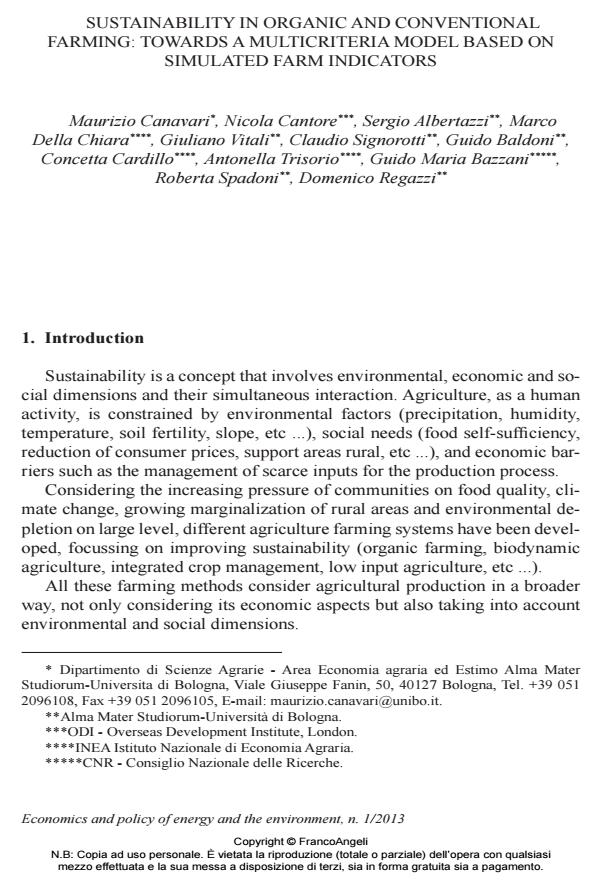Sustainability in organic and conventional farming: towards a multicriteria model based on simulated farm indicators
Journal title ECONOMICS AND POLICY OF ENERGY AND THE ENVIRONMENT
Author/s Maurizio Canavari, Nicola Cantore, Sergio Albertazzi, Chiara Marco Della, Giuliano Vitali, Claudio Signorotti, Guido Baldoni, Concetta Cardillo, Antonella Trisorio, Guido Maria Bazzani, Roberta Spadoni, Domenico Regazzi
Publishing Year 2013 Issue 2013/1
Language English Pages 26 P. 175-200 File size 921 KB
DOI 10.3280/EFE2013-001009
DOI is like a bar code for intellectual property: to have more infomation
click here
Below, you can see the article first page
If you want to buy this article in PDF format, you can do it, following the instructions to buy download credits

FrancoAngeli is member of Publishers International Linking Association, Inc (PILA), a not-for-profit association which run the CrossRef service enabling links to and from online scholarly content.
In this paper we report our efforts to develop an inter-temporal model for the evaluation of the impact of organic farming on greenhouse gases emissions, that we called BIOSUS-MAD. The model focuses on the maximization of farmer’s net income though different crops rotations constrained to the use of resource inputs; outputs of this optimization process are numerical values for key variables useful to estimate a set of social, economic and environmental indicators. These indicators will feed a multi-criteria model providing a synthetic and comparable sustainability overall index. This approach makes MAD a potentially useful tool for policy-makers to get an ex-ante assessment of the effects of agro-environmental policies. The model can manage different scenarios and could provide useful information to policy makers by running simulations incorporating European economic and/or environmental policies.
Keywords: Sustainability, multicriteria analysis, farming, agricultural economics
Jel codes: Q15, Q16, Q57
- Using FADN Data to Estimate CO2 Abatement Costs from Italian Arable Crops Guido M. Bazzani, Giuliano Vitali, Concetta Cardillo, Maurizio Canavari, in Sustainability /2021 pp.5148
DOI: 10.3390/su13095148
Maurizio Canavari, Nicola Cantore, Sergio Albertazzi, Chiara Marco Della, Giuliano Vitali, Claudio Signorotti, Guido Baldoni, Concetta Cardillo, Antonella Trisorio, Guido Maria Bazzani, Roberta Spadoni, Domenico Regazzi, Sustainability in organic and conventional farming: towards a multicriteria model based on simulated farm indicators in "ECONOMICS AND POLICY OF ENERGY AND THE ENVIRONMENT" 1/2013, pp 175-200, DOI: 10.3280/EFE2013-001009